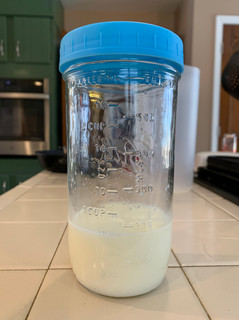How I Dealt with High Lipase Milk After Pumping
- Megan
- May 9, 2023
- 2 min read
Updated: May 15, 2023
I started pumping milk for Wendy when she was about 4 weeks old, in preparation to send milk to daycare. I immediately used the pitcher method, preferring the pooling of a day's milk as it seemed most efficient.
When Wendy was around 6 months old, she started refusing bottles at daycare. Thanks to a post I had seen0 by Kristen Krahl of bemybreastfriend, I was able to recognize that the lipase enzyme in my milk was higher than normal. I promptly tasted my milk and didn’t blame poor Wendy for refusing it - at just a day old, it tasted like soap. The higher content of the lipase does not render the milk unsafe for consumption, but it does create a soapy, metallic, or fishy taste and/or smell - all attributes which some babies find unappetizing leading them to refuse a bottle.
There are a few things one can do upon discovering this anomaly:
Mix milk that has turned in taste with freshly pumped milk and feed before the enzyme turns the overall taste,
Add imitation vanilla to the bottle, or
Scald the milk (heat in a small pan just until you see bubbles around the edge), and then chill immediately.
Supplies I used
small stainless steel sauce pan
candy thermometer
stainless steel bowl*
stainless steel mug*
*Ceres Chill replaced the bowl and mug later on in the process
spatula
My Process
scald milk on medium-low heat to avoid burning, up to 170 degrees fahrenheit
immediately transfer scalded milk, using spatula to collect all droplets, in stainless steel vessel
place vessel in bowl of ice bath
once completely chilled, transfer to pitcher or individual bottles**
**if transferring to individual bottles, make sure to gently stir the chilled milk before transferring to ensure nutrients are evenly distributed
I scalded milk for 9 months, so became quite methodical in my process, especially after introducing my ceres chill into the chilling process. I determined that, throughout a "pumping day" of 6 hours (2-3 pump sessions), I could pool the sessions from the day together and scald all at once in one batch as there is grace period between pumping and scalding where the milk will not have turned yet. I found the longest I could go without scalding was 12 hours. This grace period is different for everyone and typically determined by trial and error. Luckily for me, not much milk was wasted in determining the grace period for my milk.
Have you encountered bottle refusal due to high lipase? If so, how did you mitigate the issue? Comment your experience below!











Comments